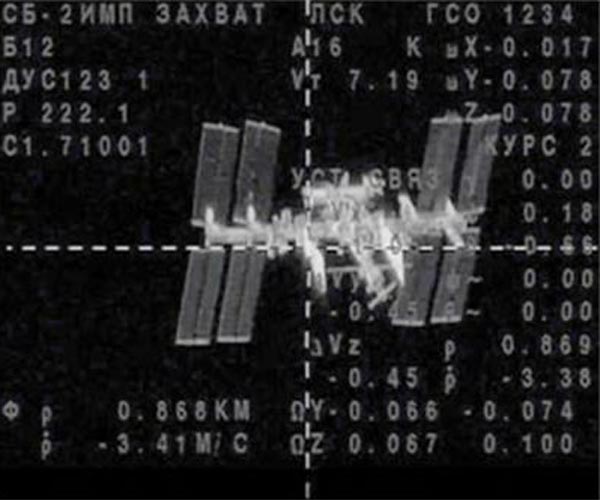Rusia lanzó una nave espacial Soyuz no tripulada a la Estación Espacial Internacional el jueves para reemplazar una que perdió refrigerante después de que fue golpeada por un meteorito el año pasado, dejando varados a dos cosmonautas y un astronauta de la NASA en el espacio. La nave espacial Soyuz MS-23 fue lanzada con 948 libras de suministros para los astronautas desde el Cosmódromo de Baikonur en Kazajstán a las 7:24 pm EST.
Russia launched an unmanned Soyuz spacecraft to the International Space Station on Thursday to replace one that leaked coolant after it was struck by a meteoroid last year, stranding two cosmonauts and a NASA astronaut in space.
The Soyuz MS-23 spacecraft was launched with 948 pounds of supplies for the astronauts from the Baikonur Cosmodrome in Kazakhstan at 7:24 p.m. EST, which was broadcasted by NASA.
NASA said the spacecraft will dock with the ISS after a two-day journey and return with NASA astronaut Frank Rubio and Roscosmos cosmonauts Sergey Prokopyev and Dmitri Petelin “later this year.”
“And liftoff! A new ride back to Earth for Rubio, Prokopyev and Petelin,” Rob Navias with NASA communications said during the Thursday broadcast.
In a statement, Roscosmos said Wednesday that the crew will return with the Soyuz MS-23 in September. The space agency previously extended how long the astronauts would be spending in space.
The damaged Soyuz MS-22 spacecraft, which carried the astronauts to the space station in September, will remain docked at the ISS until late March, NASA said in a statement.
The spacecraft, which will return Earth unmanned, is expected to arrive in Kazakhstan after a parachute-assisted landing, with Russia’s space agency Roscosmos conducting a post-flight analysis.
The dilemma on how to bring the astronauts home began when the Soyuz MS-22 spacecraft was struck by meteoroid on Dec. 15 and started to leak radiator coolant.
Russia originally had planned to send the replacement spacecraft on Feb. 14 but the rescue mission was put on hold after another Russian spacecraft, the Progress MS-21 cargo ship, also docked at the space station, suffered a similar leak.
Roscosmos and NASA officials previously said that the Soyuz MS-22 spacecraft would only be used for return to earth if an emergency evacuation of the space station was needed, with the two cosmonauts. Rubio would return on SpaceX’s Crew Dragon Endurance in the case of an emergency.
The dock for the Soyuz MS-23 spacecraft only opened up after the Progress spacecraft was able to undock from the ISS, Navias said. The progress was deorbited on Saturday and burned up over the Pacific Ocean.
Navias noted that, at the time of the launch of the Soyuz MS-23 spacecraft, the seven members of the Expedition 68 crew were asleep.
When the Soyuz MS-23 spacecraft arrives, Prokopyev and Petelin will move their seat liners from the Soyuz MS-22 to the rescue ship while Rubio will move his from the Crew Dragon Endurance.
The back-to-back leaks raised questions about whether the rescue craft also might start to leak during flight, possibly because of a design defect.
Navias said Thursday that NASA executives Kathy Lueders and Joel Montalbano were in Baikonur for the launch.
Sophie Goguichvili, the program associate for the science and technology innovation program with the Wilson Center think tank in Washington, D.C., told UPI last week that meteoroids will continue to be an issue for Roscosmos and other spaceflight operators.
She also noted that the leak was not the first suffered by a Russian spacecraft. In 2018, a “slight drop” in cabin pressure at the ISS was traced back to a small hole in the habitation compartment of the Soyuz MS-09 spacecraft.
“Upon investigating it, Russia blamed NASA astronauts and even alleged that a U.S. crew member ‘drilled the hole’ deliberately. So even without the war in Ukraine, diplomatic tensions were high,” Goguichvili said.
Because of that incident, Goguichvili called it “understandable” that NASA and Roscosmos would want to investigate further after a second consecutive coolant leak in a matter of months to ensure that Soyuz MS-23 will be capable of returning the three astronauts back home.
Fuente: https://www.spacedaily.com


